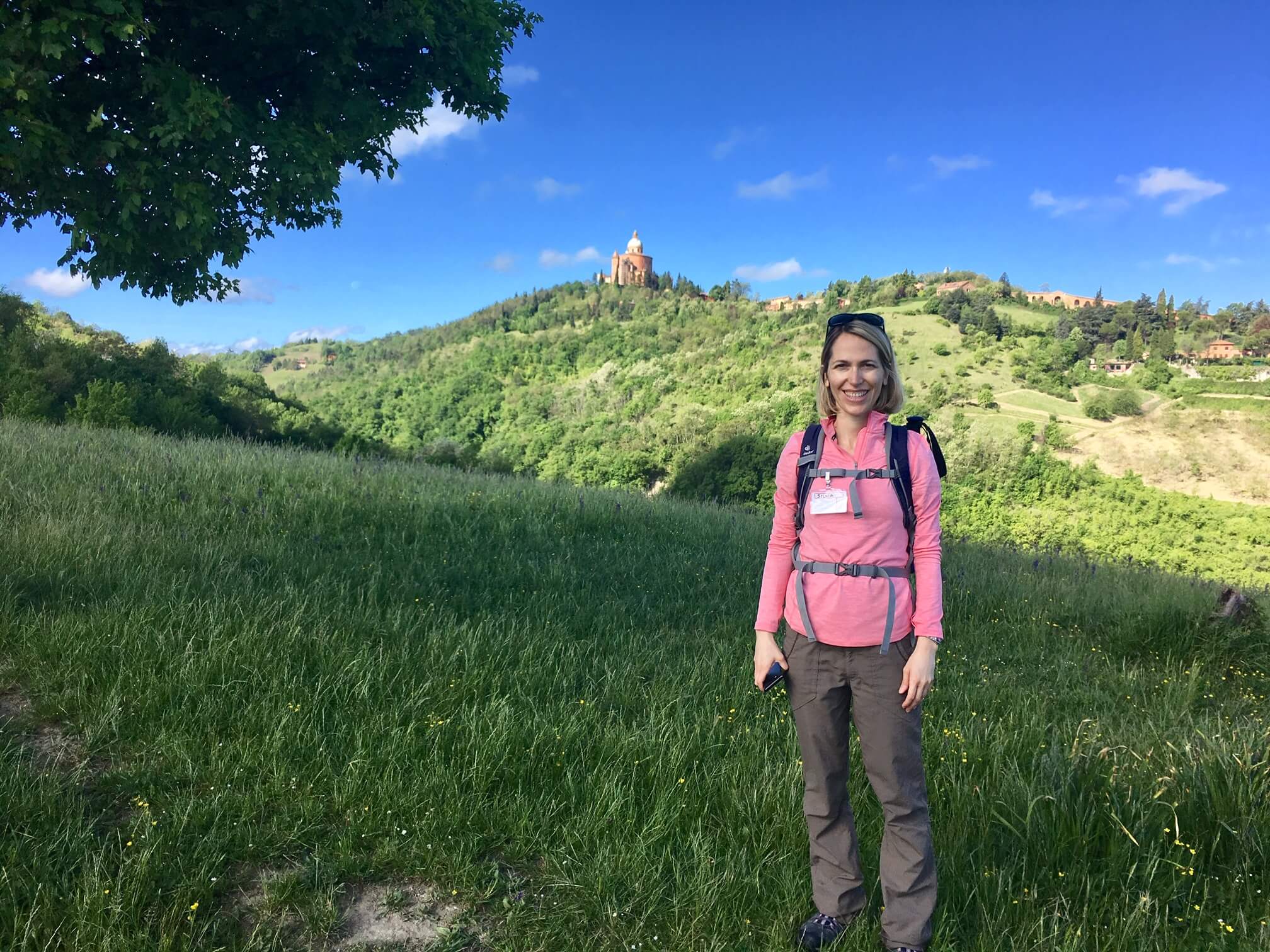
As the progressive city it has long been, Bologna has allowed many women artists to flourish, even in the past when it was extremely rare for a woman to become an accomplished painter or sculptor. In honor of upcoming International Women’s Day, learn about three remarkable Bolognese women who made a name for themselves as talented artists and inspired many women after them to follow in their footsteps.
Properzia de’ Rossi, c. 1490-1530
Described by her contemporaries as brilliant, fickle and untamable, Properzia de’ Rossi was one of the first female Renaissance sculptors at a time when sculpting was considered a prerogative of men due to the strength and stamina required for the job.
Born around 1490, De’ Rossi is said to have had a tumultuous life, both in the private and professional realms. It was rumored that she had an unrequited love for the powerful Anton Galeazzo Malvasia and that she vented her passion through her art; although other documents point to a relationship between the two, suggesting that Malvasia actually helped De’ Rossi get a commission for the large art workshop set up for the construction of the Basilica of San Petronio.
De’ Rossi first came to prominence for her fine tiny sculptures on peach and cherry pits. Her ability with sculpting soon attracted the envy of her male peers, especially Amico Aspertini, who worked alongside Properzia in the San Petronio workshop. In fact, as pointed out by Vasari in his “Life of Madonna Properzia de’ Rossi”, she was paid a much lower salary than her male colleagues, “a most beggarly price for her work,” he wrote. (Things really never change, don’t they?!).
Where you can see Properzia De’ Rossi’s work in Bologna
- The Museo di San Petronio inside the Basilica of San Petronio houses two marble bas-relief panels, Joseph and Potiphar’s Wife and Joseph’s Chastity , executed around 1525 for the smaller doors of the Basilica, but never put in place.
- In the Museo Civico Medievale, you can admire Properzia’s carved peach stones mounted in the emblem of the Grassi family, and a sculpted Annunciation.

Lavinia Fontana, 1552-1614
Artist, mother and wife: Lavinia Fontana was a painter of the Mannerist school, one of the most important portraitists in Bologna in the later 16th century, the mother of 11 children and the family’s breadwinner (proof of how women have always been great at multitasking).
The daughter of Prospero Fontana, a well-known Bolognese painter, Lavinia grew up among artists and intellectuals. By the age of 25, when she got married to a painter from Imola (alas much less gifted than she was), Lavinia was already acknowledged as a professional painter. She soon became famous for portraiture, and produced many portraits of Bolognese noblewomen. She also produced many religious paintings, and, in 1603, she was invited to Rome by Pope Clement VIII, where she continued painting portraits and altarpieces, making a name for herself in Rome just as she had in Bologna.
Where you can see Lavinia Fontana’s work in Bologna
More than 100 works by Fontana are documented, but only 32 signed and dated works are known today and many of these are not in Bologna.
- At the Pinacoteca Nazionale, you can see the Portrait of the Gozzadini Family (1584).
- In the Rosary chapel of the Basilica of San Domenico, Jesus among the Doctors, part of the Mysteries of the Rosary.

*A beautiful painting by Lavinia Fontana, Minerva Dressing, is on view at the Galleria Borghese in Rome.
Elisabetta Sirani, 1638-1665
Elisabetta Sirani was a Baroque painter, a major artist in 17th century Europe, and the most famous woman artist in early modern Bologna, where women artists were more likely to emerge thanks to the city’s progressive attitude.
By the time she died in mysterious circumstances at the early age of 27, Sirani had produced 200 paintings, 15 etchings, and hundreds of drawings. Trained by her father, a painter of the Baroque painting movement known as School of Bologna and a pupil of Guido Reni, Sirani soon distinguished herself for the originality and boldness of her work. Her portraits of female heroines, such as Portia Wounding Her Thigh, have been compared to those of Artemisia Gentileschi, the most accomplished and progressive female painter of the Baroque age.
When Elisabetta’s father became sick, she took over the family’s workshop. She became famous all over Europe, her paintings were acquired by noble and royal patrons, including the Grand Duke Cosimo III de Medici; and when illustrious people passed by Bologna, they requested to visit her female-only studio to watch her at work.
When she died, she was given a ‘celebrity’ funeral, with music, poetry and a large catafalque decorated with a life-size sculpture of the artist herself. Sirani was buried in the Basilica of San Domenico. She would be an inspiration to many female artists who came after her.
Fun fact: a crater on the planet Venus is named after Sirani.
Where you can see Elisabetta Sirani’s work in Bologna
- Collezioni d’Arte e di Storia of the Fondazione Carisbo, Portia Wounding Her Thigh, 1664
- Inside the Church of the Certosa di Bologna, the city’s monumental cemetery, The Baptism of Christ, 1658
- Pinacoteca Nazionale, several paintings and drawings including Santa Maria Maddalena, Sant’Antonio da Padova in adorazione del Bambino, and San Girolamo.

*You can see the terracotta busts of the three artists above at the Museum of the History of Bologna, part of a cycle of 12 busts depicting prominent Bolognese women.


This is very interesting. I look forward to seeing these in person on my next BO visit.
Excellent article! I knew about Sirani, but not Fontana or De’Rossi. Thank you for sharing!